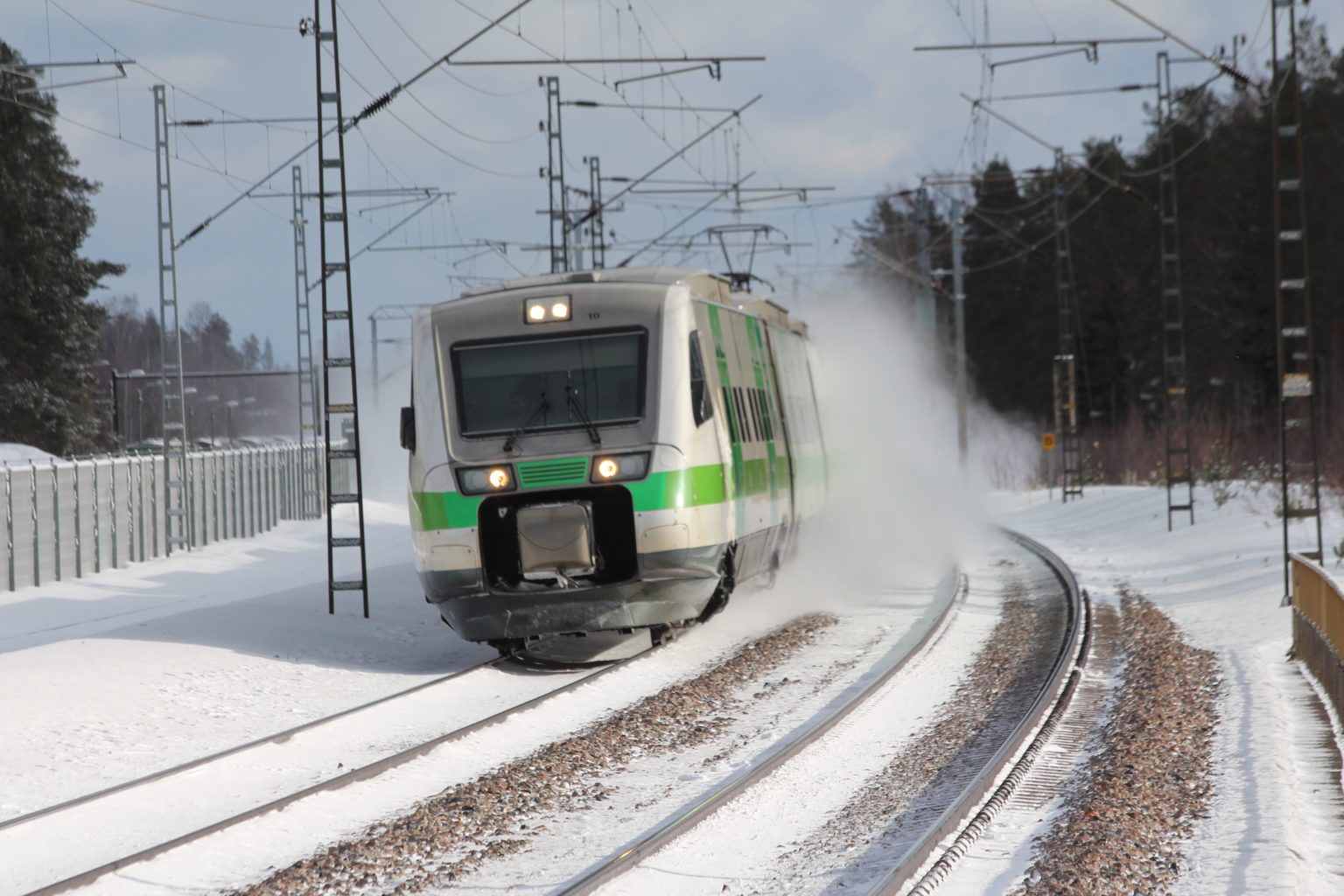


Infrastructure and Stations
Stations
Objective
In Europe, some rail infrastructure managers own or operate stations. In some cases, the operational part of station management is delegated to another entity, which could also be a railway undertaking. EIM’s members who manage stations are keen to share knowledge and experience with European peers on topics such as station management, development and operations, but also on critical and strategic issues (e.g. security, digitalisation and multimodality).
EIM in action
- The WG shares information and best practice relevant to stations. It focuses on the status and application of standards for stations and on the division of responsibility for platforms.
- EIM monitors the relevant legislation affecting stations (e.g. safety, PRM, capacity, etc) and triggers its members’ input when needed.
- EIM ensures coordination and collaboration with the PRM WG given the shared topics of interest.

EIM actions in 2022
- The WG met regularly during the year and launched an enquiry on the minimum design requirements for platforms, also involving EIM’s WG Passengers with Reduced Mobility (PRM).
- The members of the WG PRM were also involved in all relevant discussions related to stations.
Outlook 2023
- The WG will continue to organise joint meetings with the WG PRM discussing investment projects involving the design and operation of stations linked to the TSI PRM
- The WG will also discuss key issues for station managers, such as energy efficiency in stations and sustainability measures; digital solutions for tracking people’s movements with a focus on LIDAR technology; next round of TSI revisions.
- The cooperation with the Resilience WG will be increased given the need to have a coordinated approach on certain continuity aspects
Infrastructures
Objective
The 4th Railway Package, especially the Directive (EU) 2016/797 on the interoperability of the rail system within the European Union, require the adaptation of the network to European standards to allow a smooth circulation of trains in Europe. The first step for rail Infrastructure Managers (IMs) towards this goal is to follow the European requirements when renewing, upgrading or building new lines and stations. These requirements are stated in the Technical Specification for Interoperability on Infrastructure (TSI INF) (Regulation (EU) 1299/2014) to ensure the interoperability of the subsystem. IMs are committed to increase the capacity and efficiency of their rail infrastructure to the goal of the EU to shift medium distance passenger transport and freight from aviation and road to rail and to cut CO2 emissions in transport by 90% by 2050, as defined in the 2021 EU “Sustainable and Smart Mobility Strategy’.
EIM in action
- EIM aims at improving interoperability of the network by filling the gaps in the TSI INF in a cost-efficient way. The implementation of the TSI can be improved by sharing practical experiences with the new TSI INF published in September 2023.
- EIM’s WG “INF” (Infrastructure) cooperates with the relevant peer group of CER (CER WG INF) to gather infrastructure expert’s competence from both sector organisations in Europe and to develop joint opinions and change proposals vis à vis ERA.

EIM actions in 2023
- EIM supported the EU Agency for Railways (ERA) in the revision of the TSI INF via technical experience.
- EIM’s WG “INF” has taken part in ERA’s Topical Working Group “Interfaces between Rolling Stock and Fixed Installations” (TWG RST-FI). This ERA TWG has worked on 5 Change Requests (CRs). These CRs are RST-INF interface related and mainly pointed out by ERA, not the INF sector.
- EIM’s WG “INF” held joint meetings with CER’s WG INF (Joint EIM CER WG INF) chaired by EIM’s WG “INF”. EIM submitted joint Change Requests of EIM’s and CER’s INF experts for inclusion in ERA’s CCM Tool (Change Control Management).
- ERA considered the opinion of EIM’s WG “INF” during the process with proposed/revised requirements and the closing of the open points in the TSI INF.
Outlook 2024
EIM’s WG “INF” will continue its work related to the following topics:
- Preparation of the next revision of the TSI INF:
- Review of interoperable constituents (IC)
- EIM position on platform-train interface together with EIM’s WG “PRM” and CER
- EIM position on conditions for authorization of existing subsystem (7. Implementation)
- HABD & HWD
- Input to and clarification of the new EC mandate
- Is “refueling of traction battery” really an INF topic?
- What is expected on the new topic “low-cost infrastructure for low density lines”?
- Sharing of experience between IMs to understand and assess
- Track resistance to applied loads (4.2.6)
- Equivalent vertical loading for new geotechnical structures, etc. (4.2.7.2)
- Preparation of a “best practice/handbook” for assessment of the basic parameter of the TSI INF
The “priorities and focus” depends on ERA’s working process for the next revision of the TSI INF and the new working groups.
Application guide

Asset Management
Objective
The efficient management of rail infrastructure assets, including the accurate forecast of related investment plans, are the cornerstone of the business of rail infrastructure managers (IMs). IMs are looking to maximize the ‘value for money’ of their operations to deliver benefits to funders and other stakeholders and to improve service delivery to customers through ever more efficient asset management. Efficient asset management is about the right balance between the cost of maintenance, renewal, traffic management and delivering excellent customer service as well as the revenue generated from commercial activities and subsidies.
EIM in action
- EIM’s WG on “Asset Management” promotes the exchange of information among IMs for evidence-based analyses and benchmarks of management practices for business performance improvements.
- The WG will be triggered in case a concrete need for exchange among IMs arise in this domain, which is complementary to the scope of activities within PRIME (platform of rail infrastructure managers in Europe).

EIM actions in 2023
- The activities are currently on hold.
Outlook 2024
- The WG will assess opportunities to tackle specific issues, complementary to activities conducted on EU level.
Resilience
Objective
Degraded situations stemming from a lack of preparedness for extreme and unexpected events are an increasing concern as these events may affect the performance or lifespan of assets owned and operated by Rail Infrastructure Managers (IMs). This can have severe operational, financial, environmental and social consequences. Therefore, ‘resilience’ is becoming an increasingly critical topic for IMs.
IMs ensure efficient rail operations through the development of dedicated resilience plans and processes covering the entire value chain of infrastructure management. Resilience aspects may include, among others, business continuity in case of sanitary and political crisis, climate change, technical failures, (cyber)security issues and human errors.
EIM in action
- EIM’s Working Group “Resilience” exchanges information among IMs and acts as a platform for benchmarking of the main infrastructure ‘vulnerabilities’ as well as the respective ‘Business Continuity Plans’.

EIM actions in 2023
- The WG “Resilience” held monthly meetings to exchange on “Business Continuity Management” (BCM) Plans, BCM Awareness and other topics.
- It also welcomed the participation of non-EIM members as “observers”.
Outlook 2024
- Following the growing number of EC initiatives related to security and cybersecurity prevention measures as well as BCM aspects, the WG will strengthen its coordination with EIM’s WG “SEC/CYBER”.
- The WG “Resilience” will also address the issue of climate change adaptation.